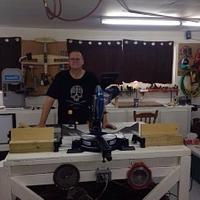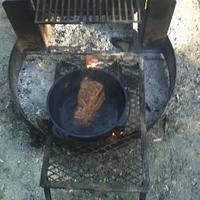
Brian
in over 11 years
Reclaimed lumber finishing
I have a client that wants some shelving made with reclaimed wood. The apartment is in the seaport in downtown Manhattan. The lumber, which she is supplying, is apparently from a pier nearby, is mahogany and has a nice grayish patina. She wants to keep that patina but I can see just from the short sample she provided that the wood is twisted and warped beyond belief. We finally settled on a design where the wood will be cut into 12" strips and installed crossways into steel ledgers.
We have no way to know what kind of nastiness could be contaminating this wood. She doesn’t want to finish it because it will change the color. Same reason she won’t allow it to be milled.
How do you deal with that? I explained that it could be contaminated. I explained that we couldn’t build the shelf she designed because of the warping (hence the design change). No poly, no stain, no oil, no sanding, no nothing other than cut to size and install.
Do most folks sand and finish? When I work with pallet wood I always plane it and seal it after. It’s probably slightly less likely that pier flooring is contaminated and the gray is probably just salt, but this stuff is old and it’s coming from an industrial area. I’m a little worried. Should I do something like make her sign a waiver?
Losing fingers since 1969
6 Replies
A couple of questions. Will the wood come into contact with people directly? Will the shelves come into contact with food of any kind? Personally I would turn down the lumber if it was twisted in any way that made it hard to work with. But that’s just me. I have no qualms about turning a job down that would reflect on the product I built. I have told customers to find someone else because what you want built is not in my scope of work, but I would still like to maintain them as a customer just not on this project. You could even suggest someone else to offer up a solution for them.
CHRIS, Charlottetown PEI Canada. Anytime you can repurpose, reuse, or recycle, everyone wins!
No food contact. It goes into the living room for books and decorations. The client is a designer that is – with the exception of this one issue – easy to work with and I hope to get some future business from her. Actually, even with this issue, she’s been pretty flexible. She’s stuck on this lumber for the historic value of it – from the seaport to an apartment in the seaport (via a reseller 200 miles away LOL). This is just one component of a total renovation I’m doing.
Losing fingers since 1969
Can’t you seal it with a clear matt finish. With no gloss It shouldn’t show at all, but it would seal away any possible ‘nastiness’.
Mike, an American living in Norway
I tried some poly, but as soon as the patina gets wet it gets dark and doesn’t come back after it dries. The gray stuff is dirt of some sort.
Losing fingers since 1969
something probably stupid: a light coat of clear epoxy? Never done it of course.
Abbas, Castro Valley, CA
I’d definitely get a signed waiver. There’s no telling what is in that wood. I’d also include a contractual obligation on her part that it will never be allowed to come in contact with food, drink, or children. Honestly I don’t use pallet wood because I’ve been in the transportation business for 22 years. I’ve seen where pallets go and what they get into. The same goes for the wood you are working with. I’d be exceptionally leery about that stuff.












